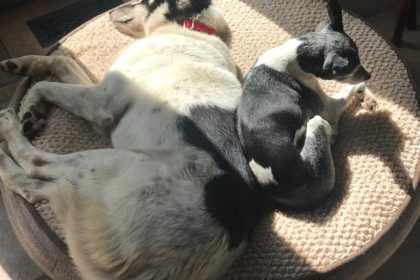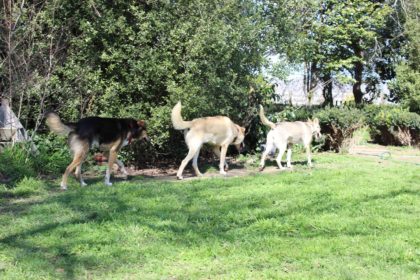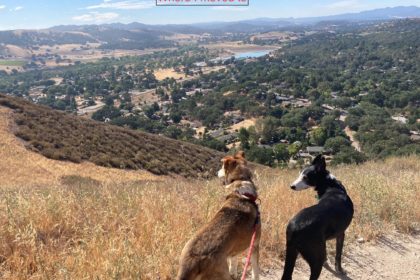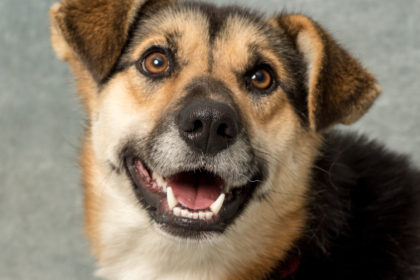Several of you have asked about the difference, besides the distance, between a 300 mile race and a 1,000 mile race. It’s a complex question for which there are probably as many answers as people you ask. For what it’s worth, here’s my view on the subject:
There are three basic criteria for evaluating sled dogs: Ability, Attitude and Appetite.
Ability simply refers to the their speed, strength, stamina and agility. Obviously, these are the fundamental athletic traits you want in racing sled dogs.
Attitude refers to their enthusiasm, initiative, tenacity and resilience. How much they love to run, whether they’re always eager to get up and go, how hard they work through challenges and how quickly they bounce back from difficulties.
Appetite is all about how well they eat. Will they eat anywhere, everywhere, anytime and everytime. At the most basic level, sled dogs are energy conversion machines that turn food into power. They’re like diesel motors: If you can keep putting fuel in the tank, they’ll keep cranking out the power. To do that, they have to eat, no matter how tired they are, how tough the conditions or how bad the weather.
A fascinating aspect of sled dog racing is how much the priority of these attributes shifts depending on the length of a race:
For short races, ability is everything: Run faster than the other teams, then go home to your dog house for dinner and a movie.
In mid-distance races like the YQ300, teams are on the trail for a couple of days and are likely to face larger challenges of conditions and fatigue. Thus, their ability must be supported by their attitude and appetite.
For long-distance races like the YQ1000, attitude and appetite actually take precedence over ability. Even a mediocre athlete who goes the distance in harness is far more valuable than a talented dog who quits or loses weight and gets dropped from the team.
It is very rare for a dog to be superb in all three criteria. For example, Dingle has a solid attitude and a healthy appetite, but he’s not very fast. Rambler has ability and attitude, but he’s sometimes fussy about eating. Beemer has ability and appetite, but he occasionally gets a little “soft” in the head. Quito is as close to being a perfect dog as there is.
Despite these minor differences, it’s the overall, very robust combination of all three attributes that makes the dogs of SP Kennel superstars. The broad latitude of distances in which they are highly competitive is testament to their genetics, training and care. They probably won’t win a 20-mile sprint race, but if it’s anything between 100 and 1,000 miles they’ll be in the hunt!
Everything I’ve written above is also true about the mushers. As races get longer, the complexity, hardship and fatigue go up exponentially. Short races are relatively easy to plan, execute and endure. Long-distance races require monumental preparation, diligent and determined strategy, and epic physical and mental stamina.
The dogs’ attitude resonates with the musher’s, so confidence, focus and grit must be maintained over every single mile. If a musher gets down or fatigued, the dogs are sure to follow suit. Aliy and Allen are champs because of their mental, physical, emotional and psychic prowess.
Last but certainly not least, the same is all true for the Crew: The many miles traveled over desolate roads. The hours and hours of being tired, cold, hungry and bored while waiting for a team, then jumping into total action on a moment’s notice. Pampering dropped dogs when all you want to do is curl up and die.
Basically, the difference between a 300 mile race and a 1,000 mile race is like the difference between running a mile and running a marathon… You’ve got to have ability for both, but you need attitude and appetite to go the distance.











Poetic as well as informative
Wow…nicely explained there my friend! You are the SPK Sled Dog Ambassador of Explanations…nicely done! If your taking questions….can you explain the strategy options for this Yukon Quest 1,000 mile race? I'm a YQ Newbie…and I'm perplexed as how this 36 hour layover works into differant strategies. In the Iditarod you have options where you take your 24….but this race it's Dawson….no flexibility. Break it down for us in your Macgellan "plain language" way please!
Full of information and easy to understand. Great combination – thanks!
great breakdown and info Mac!
….ahhh. the answer is 700 miles!
Seriously, thanks for the analysis.
What a great & informative post. Excellent insight also. Thanks so much.
So interesting. Thanks!